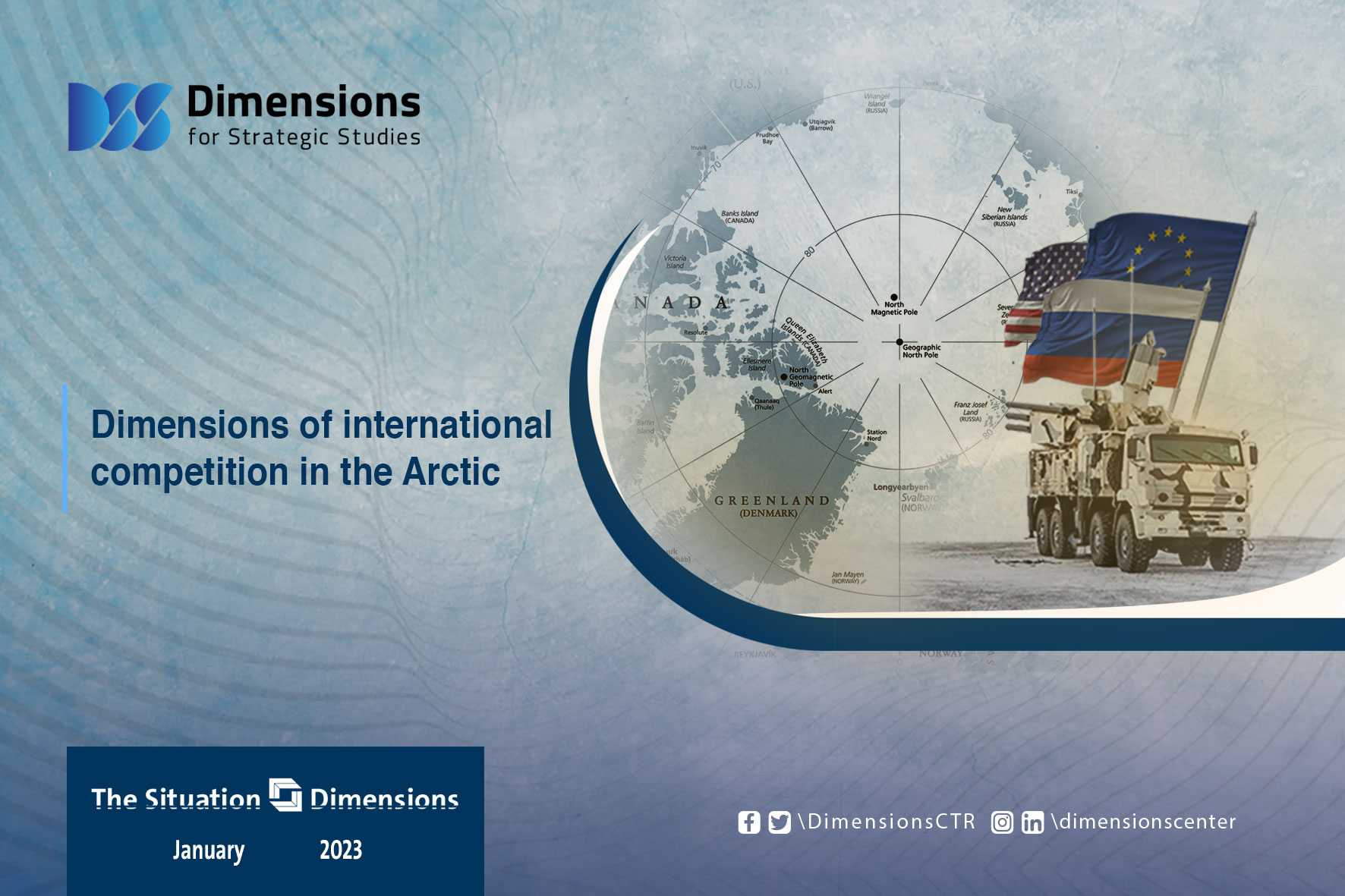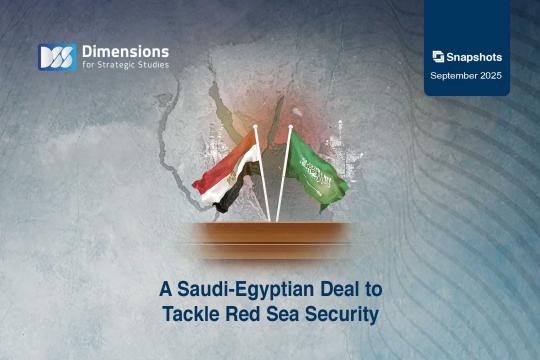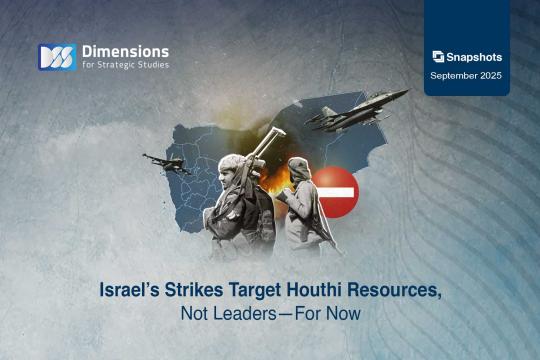
Dimensions of international competition in the Arctic
2023-01-171567 view
During the past ten years, and specifically since 2013, international competition has escalated in the Arctic region, which includes Canada, Russia, America, Norway, Denmark and Finland. This escalation has been linked to many major interrelated and overlapping dimensions environmental, climactic, political, economic, and strategic, including:
The first dimension is the climatic and environmental, where the Arctic Ocean constitutes about 6% of the Land area, and extends over an area of 21 million square meters, of which 40% is territory subject to the competing international powers in the region. The other third is controlled by the surrounding countries under the item "continental shelf" of these countries. And the rest is considered international waters; with no party's sovereignty over them.
According to NASA and the US Snow and Ice Centre, from 2012 to 2022, the area of ice shrank to 3.74 million square kilometres compared to a decline of 2.48 million square meters between 1981 and 2010. It is the second largest reduction in ice area since the start of the ocean ice record in 1970.
The second dimension is the struggle over energy sources. According to the American Institute for Geological Studies, the Arctic contains about 90 billion barrels of oil, more than 1.669 trillion cubic meters of natural gas, and more than 44 billion barrels of liquefied natural gas, concentrated in 84% of the areas near the continental shelf of surrounding countries, and these figures are equivalent to 22% of the world's unexplored oil.
Canada and Russia are the main beneficiaries of oil and gas explorations in the region, with Canada extracting gas and oil from the Beaufort Sea in northern Alaska; Russia extracting oil and gas from eastern Siberia and the Barents Sea. The two countries have discovered more than 400 oil and gas fields. They extract about 2.6 million barrels of shale oil per day.
Norway has opposed exploration on its own continental shelf in the Arctic over the past decade for environmental reasons. Rising energy prices and growing demand for gas; however, have prompted Norway to change its policy. It decided at the beginning of 2023 to grant exploration licenses to international companies to exploit oil and gas rights in its region.
The third dimension is natural resources. This dimension constitutes one of the most important dimensions of international competition in the Arctic, especially with regard to the conflict over precious metals, particularly those used in the manufacturing of electric cars and renewable energy devices, in addition to iron, zinc, gold, silver, coal and precious stones. The value of minerals in the region is estimated at more than $2 trillion. The Kola Peninsula, located in the far north of Russia, has large quantities of these minerals. The Canadian continental shelf contains many minerals, including gold, copper and uranium. Given that China controls about 90% of the world's production of these minerals and uses them as leverage vis-à-vis Western countries and the United States of America, international competition over Arctic minerals has escalated to counter this Chinese pressure.
The fourth dimension is the conflict over borders and influence, where Russia demands to expand the area of its continental shelf to more than 703 thousand square meters. Some of the area claimed by Russia overlaps with the continental shelf of Canada and the island of Greenland of Denmark. Since early 2014, Russia and Canada entered into a direct conflict to prove their right to extend the area of their continental shelf. Canada sent icebreakers to collect information and details and strengthen the argument that supports its position demanding an area of 1.2 million square meters in the region. In 2015, Russia submitted an official request to the United Nations to expand the borders of its shelf so that it includes the oil-rich mountain "Lomonosov". Canada also demands the annexation of the same area.
Under Russia's strategic vision, the Arctic is part of Russian history and culture because it was the first to send expeditions there. It owns half of its area and population, and seeks to dominate the region, taking advantage of its strategic superiority in it; as it has 40 icebreakers, 34 naval submarines, a full fleet, seven military bases, and deployed advanced radar and missile defence systems, capable of targeting fighters, missiles and ships. The US, in comparison, has only one sweeper in the area. Moreover, Russian has scientific missions resident in the region.
For its part, China announced itself as a sub-Arctic country, and that the region is not within the territorial boundaries of the Arctic littoral countries only; because it belongs to all humanity, and China invested about $90 billion between 2012 and 2017 in projects targeting the region. It also issued a white paper policy document to protect the environment, support governance and the foundations of scientific research in the polar regions. In January 2018, China announced the Polar Silk Road project as part of the Belt and Road Initiative, and signed several deals with Russia on the integrated development of that region. The first nuclear-powered icebreaker was established in the Arctic in 2020, with the aim of benefiting from the region's energy resources and natural resources, and establishing its influence in the Arctic as one of the major powers influencing it.
In contrast, in March 2021, the United States announced agrand strategy for what it called “restoring dominance in the Arctic,”. This strategy has a number of goals and policies, including: establishing a multidisciplinary operational headquarters with trained and equipped combat brigades, improving readiness in equipment to carry out expanded operations in the region, improving individual and collective training, and improving the quality of life for soldiers, civilians, and families residing in the region.
In mid-June 2022, Russia announced the start of the implementation of the "Senzhenka Arctic Renewable Energy Project", after suspending its membership in the Arctic Council as part of Western sanctions against it after its invasion of Ukraine. The Council's decisions were considered illegal without its participation.
Within the framework of these considerations, and those dimensions, it can be said that the Arctic will become during the next ten years an arena of the new Cold War between Russia, China and the United States of America. With the current huge differences in Russia's favor in this confrontation, it does not mean that Russia is able to resolve the conflict directly, in light of the repercussions it suffers from in the Ukrainian war, and in light of the escalating expansion of NATO in most countries bordering the Arctic.





